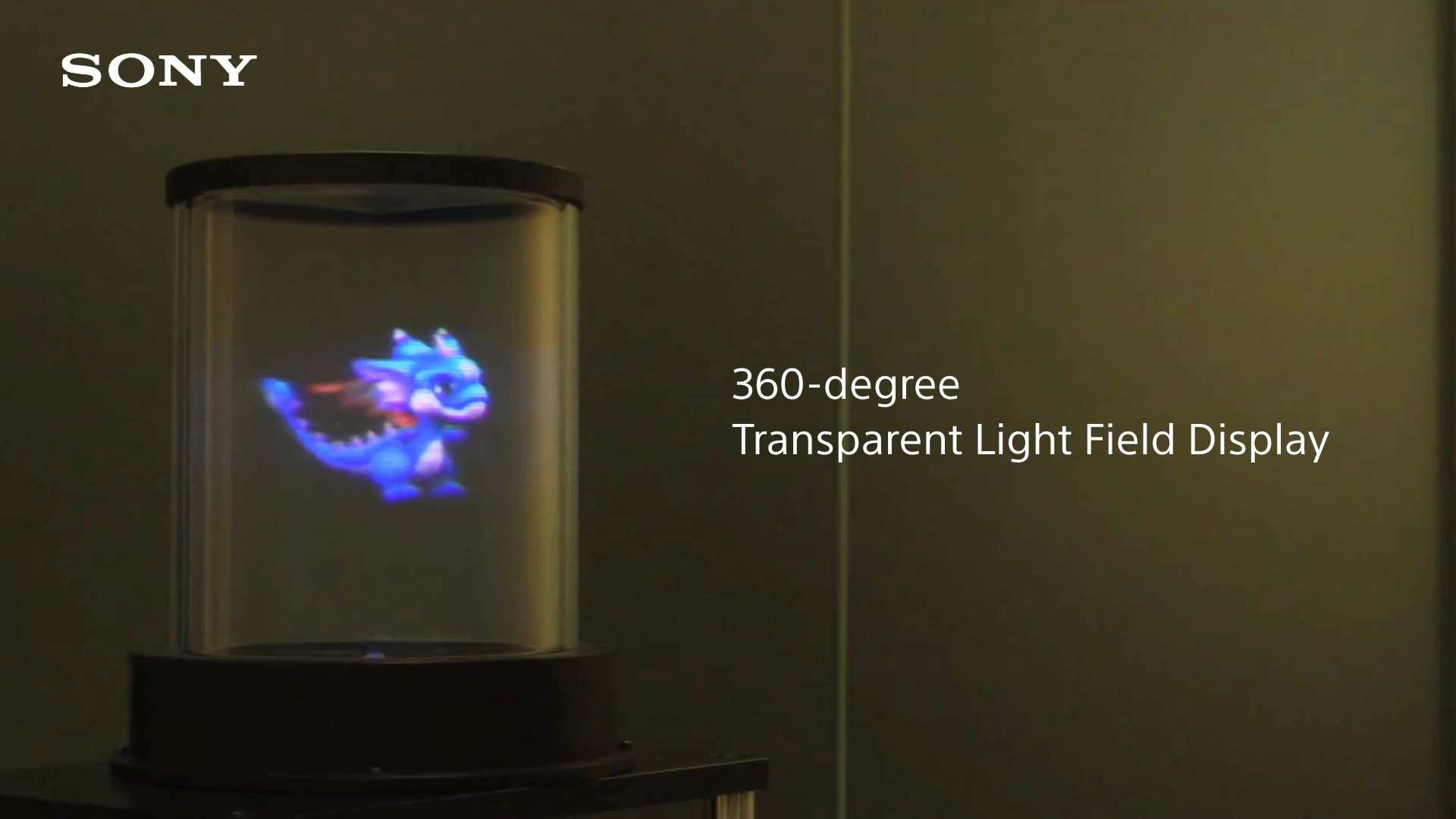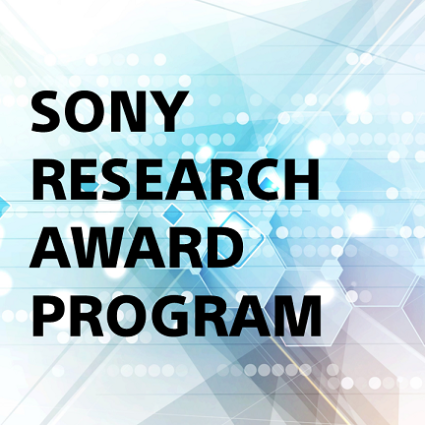The 360-degree transparent light field display, developed by the Technology Development Laboratories of Sony Corp., is a new type of cylindrical naked-eye 3D display utilizing a transparent screen called the Holographic Optical Element (HOE) screen. It can provide a transparent screen and bright 3D video even in bright lighting conditions, allowing for the fusion of the user’s background and video. Offering a sense of reality that makes the user feel as if the displayed images are “actually there,” the display delivers an entirely new experience.
This display technology was accepted for an oral presentation at the world’s largest international conference on displays, called SID2023, held in Los Angeles, the U.S. in May 2023.
[Published Paper at SID2023]
Abstract:
We have developed a novel 360-degree transparent light field display with 120 viewpoints for fully volumetric 3D video experience. It was achieved by a rotating cylindrical transparent highly-directional holographic screen and a high-frame-rate projector. It enables multiple people to simultaneously view bright and occlusion-capable volumetric images from any direction.
Our development efforts have continued after the conference, and we have now succeeded in displaying multi-color, flicker-less 3D video, which was not available when we presented our paper.
Our 360-degree transparent light field display can provide highly visible 3D video even in bright lighting conditions and is expected to be used in many different use cases. In remote communication applications, for example, users can have their 3D avatars displayed at a remote location and participate in a meeting or event as if they are there. For advertising and signage purposes, eye-catching 3D ads and signs that can be viewed from any direction can be displayed at railway stations, airports, and other places with heavy pedestrian traffic. The display has no limit on the number of viewers and allows them to view a 3D object together while standing or sitting around it. This makes the display suitable for use in discussions among multiple people in fields such as medical care, education, and design as well. Also, when used in combination with voice sensors and generative AI, it supports conversational interactions. By substantiating an AI agent as 3D video, the display can potentially be used as an AI speaker of the future that makes the user feel as if the agent is right in front of him or her.

■ Sony’s development of transparent screen display technology
To learn more, see here.



